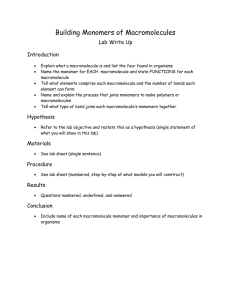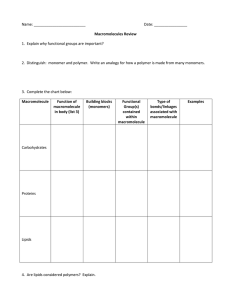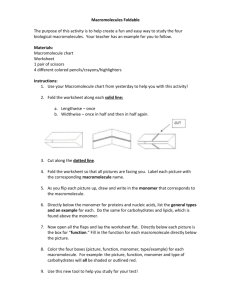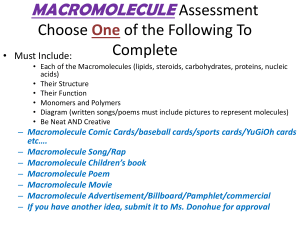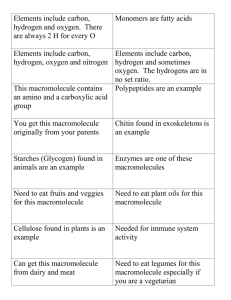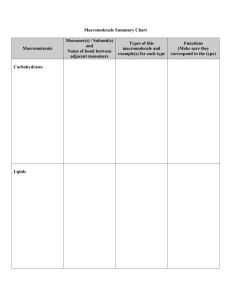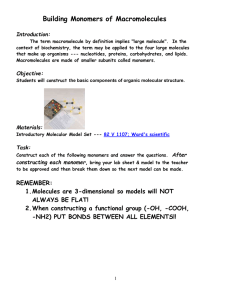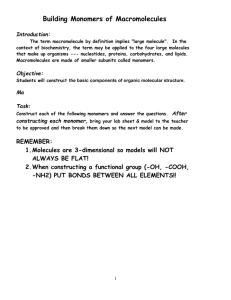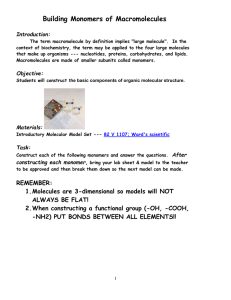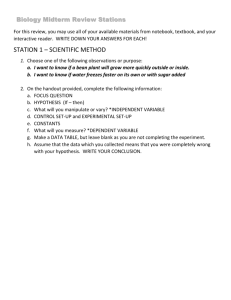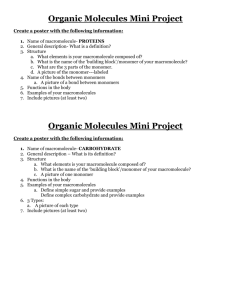macromolecule summary chart
advertisement
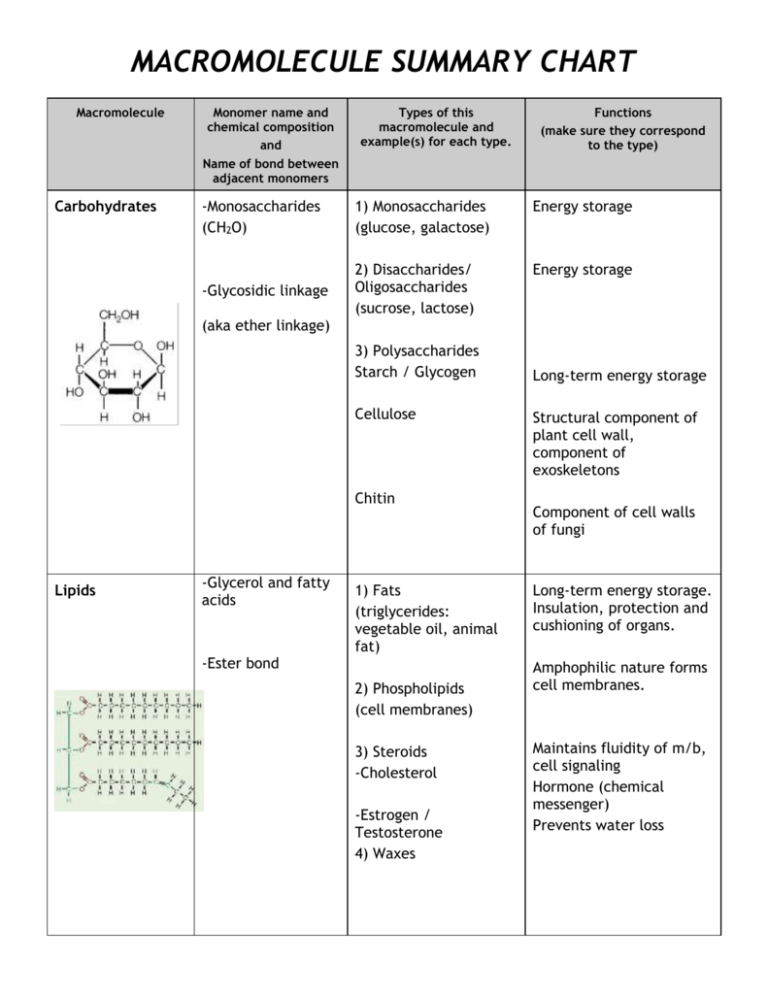
MACROMOLECULE SUMMARY CHART Macromolecule Carbohydrates Monomer name and chemical composition and Name of bond between adjacent monomers Types of this macromolecule and example(s) for each type. Functions (make sure they correspond to the type) -Monosaccharides (CH2O) 1) Monosaccharides (glucose, galactose) Energy storage Energy storage -Glycosidic linkage 2) Disaccharides/ Oligosaccharides (sucrose, lactose) (aka ether linkage) 3) Polysaccharides Starch / Glycogen Cellulose Chitin Lipids -Glycerol and fatty acids -Ester bond 1) Fats (triglycerides: vegetable oil, animal fat) 2) Phospholipids (cell membranes) 3) Steroids -Cholesterol -Estrogen / Testosterone 4) Waxes Long-term energy storage Structural component of plant cell wall, component of exoskeletons Component of cell walls of fungi Long-term energy storage. Insulation, protection and cushioning of organs. Amphophilic nature forms cell membranes. Maintains fluidity of m/b, cell signaling Hormone (chemical messenger) Prevents water loss Macromolecule Proteins Monomer name and chemical composition and Name of bond between adjacent monomers Amino Acids Types of this macromolecule and example(s) for each type. 1) Globular (Enzymes “catalase”) Peptide bonds Nucleic Acids Nucleotides (phosphate group, N-containing base, sugar) Functions (make sure they correspond to the type) Extremely diverse molecules. With a huge variety of different functions from chemical catalysts to structural building blocks. Enzymes regulate nearly all cell functions 2) Fibrous -Keratin -Fibrinogen -Actin/Myosin -Silk Diverse array of molecules often used structurally 1) DNA Genetic code/ heredity 2) RNA Protein synthesis Phosphodiester bonds 3) ATP mRNA Copy of genes for cytoplasm tRNA Delivers AAs to ribosome rRNA Part of ribosomes snRNA modifies mRNA in nucleus Cellular Energy molecule
